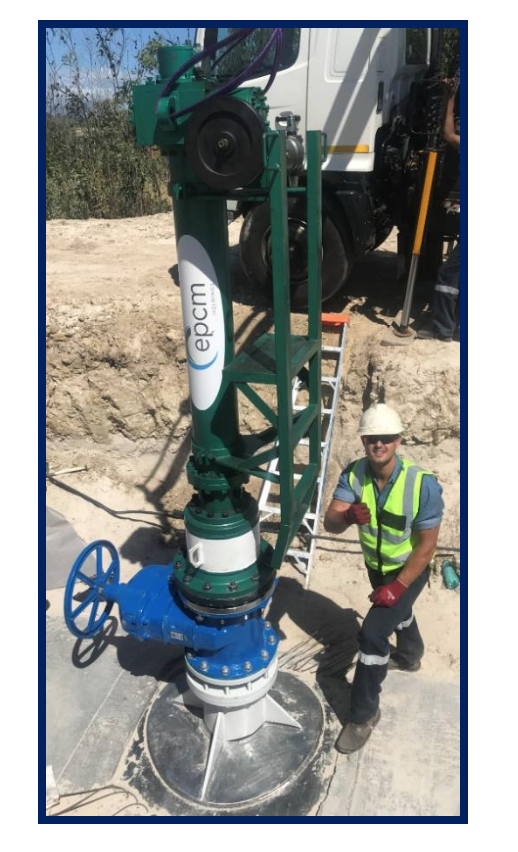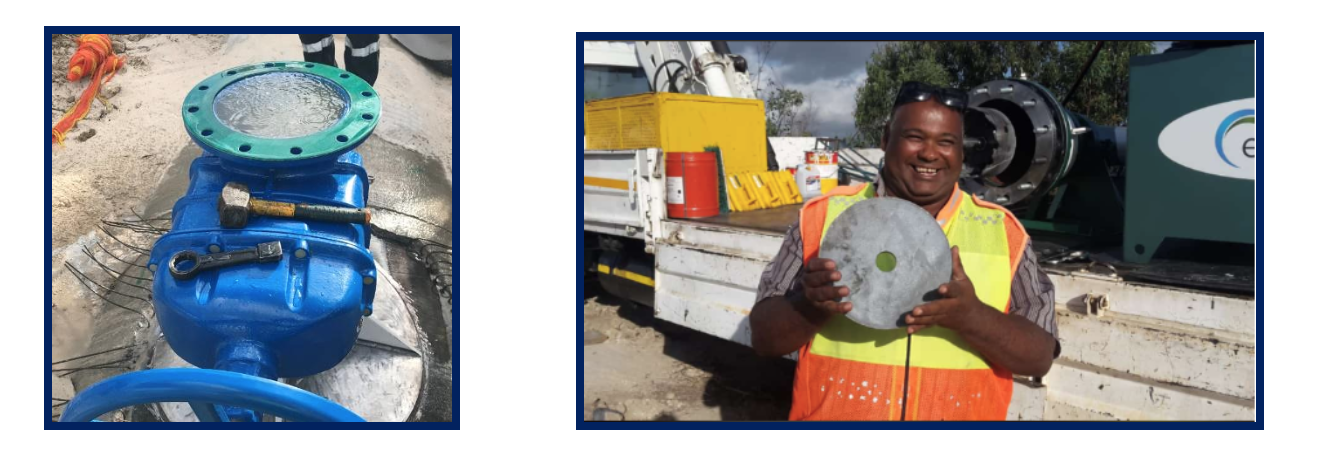In many cases, keeping pipelines online and producing is crucial for production lines and plants. However, it also becomes necessary to reroute, tie in additional lines or do maintenance on pipelines. This is where hot tapping can provide critical and much-needed support to keep the product flowing in the line while doing work. For more insights, read more on the EPCM experience.
Advice on Successful Hot Tapping: the Process
In short, this process involves welding a stub to your pipe, installing a valve, opening the valve, drilling through the open valve, retrieving the cut-out piece and closing your valve for future extensions.

Start by identifying the part of the pipeline where the new tie-in will be placed. All coatings must be removed at that location to ensure a perfect weld to the pipeline. If a complete size-to-size tie-in is being done, the whole circumference of the pipe needs to be cleaned.
When a complete size-to-size tie-in is done, a split T-piece is welded over the pipeline. This is also true when hot tapping is greater than half of the parent pipe diameter. If doing smaller taps, you can weld on a compensation plate and the stub. Always ensure that the stub length is as short as possible, seeing that your tapping machine has a limited travel distance.

Once the T piece is welded on, it is a good idea to pressure test your welding since X-ray NDT is not usually possible. Depending on the client’s specifications, they might request dye penetrating tests on the welds. Install the valve on the stub now. It is advisable to install a sandwich valve for very long taps to save some travel distance. Other full-size valves will also work for this application but are usually very large.
You can now move to the hot-tapping machine. The tapping adapter on your hot tapping machine should match the flange size of your stub that is welded to the pipe. The cutter in the machine will always be one size smaller than the adapter. This will ensure that there is enough clearance to pass through the valve and get most of the shavings out. Install a pilot drill that protrudes past the cutter onto the machine. The pilot drill should have at least one catch wire installed that also protrudes past the cutter teeth by a margin greater than your pipe wall thickness. THIS IS CRITICAL! It will ensure that the catches drill through before the cutter is through; thus, you can retrieve the coupon.
Before placing the machine on the valve it is important to measure and record all internals of the operation. When the machine is installed, you will only rely on your measurements for a successful tap. Critical measurements include:
- Distance from the tip of the pilot to the tip of the cutter
- Distance from the tip of the cutter to the base of the cutter
- Distance from the top of the flange to the pipe surface that is being cut
- The wall thickness of the pipe
The tapping machine is now installed on the valve. While the valve is open, feed the machine down to the pipe until it stops on the pipe surface. In this position, you can record your starting measurement for cutting. By considering the pipe diameter and wall thickness, you can now determine the depth at which you need to cut into the pipe. Do not, under any circumstances, cut deeper into the pipe than the base of the cutter. This might cause the cutter to jam into the pipe, and the machine cannot complete the tap.

The machine can now be switched on, and the cutting process started. It usually has an automatic feed and must be stopped when you reach your predetermined cutting distance. While the machine is operating, you will also hear it moving freely once the cutter is through, and the pressure will drop significantly.
Once through, you can stop the machine and reverse-feed it past the valve. The main valve can now be closed. The tapping adapter has a relief valve on it. This valve must be opened before the machine is removed to release the internal pressure. The machine can now be removed from the valve, and the coupon can be retrieved.

With the valve successfully installed, you can now add additional piping to your network without stopping the flow of your pipeline. Two hot taps and stopples are performed to do pipeline maintenance, and a bypass line is installed. This allows you to maintain or cut out a piece of your line while your processes are never interrupted.


 To all knowledge
To all knowledge